Submitted by Farzam Kharvari
To Copy, or Not to Copy: A Controversial Debate on the Contemporary Architecture of Iran
Iran Architecture News - Feb 24, 2018 - 09:08 29539 views
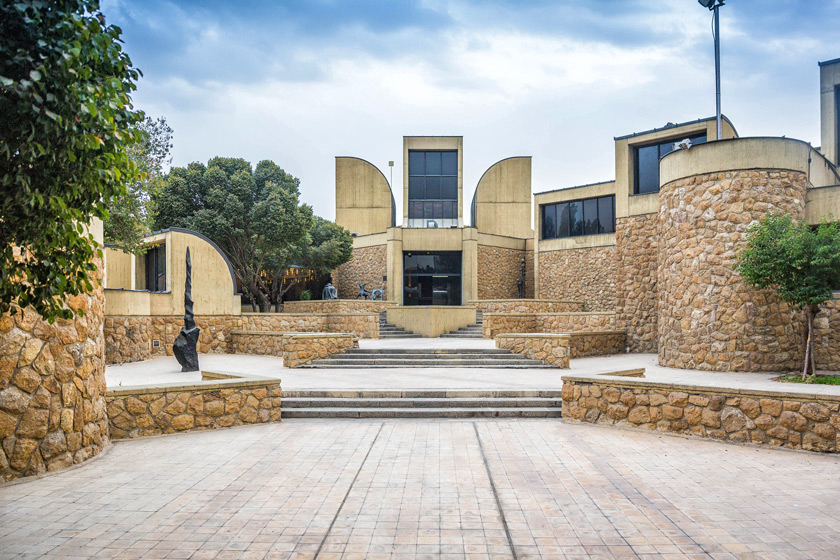
In an interview, published by an Iranian newspaper "Shargh" on June 18, 2016, Bahram Shirdel, an internationally known Iranian architect and founder of Shirdel & Partners, holds in-depth discussion on Iranian contemporary architecture, and in same parts, he discusses "copying" act over two projects of Kamran Diba and Ali Sardar Afkhami in contemporary Iranian architecture.
Two projects of Kamran Diba and Ali Sardar Afkhami were called nothing except lies in Iranian contemporary architecture by Bahram Shirdel. He believes that both projects are nothing but lies. He stated that both projects are copied from their earlier precedents designed by Josep Lluís Sert and Edward Durrel Stone, and thereby the architecture does not belong to its Iranian context and does not reflect the values of the context. Shirdel calls himself the bona fide leader of contemporary architecture of Iran but in shadow.
There are similarities between the projects and their counterparts. He believes City Theater of Tehran and Tehran Museum of Contemporary Art are copies of Beckman Auditorium which was built 4 years earlier in 1964 and The Joan Miró Foundation, Center of Studies of Contemporary Art (Fundació Joan Miró Museumin) in 1975. It is noteworthy that the center was finished and opened in 1975, only two years before opening of Tehran Museum of Contemporary Art.
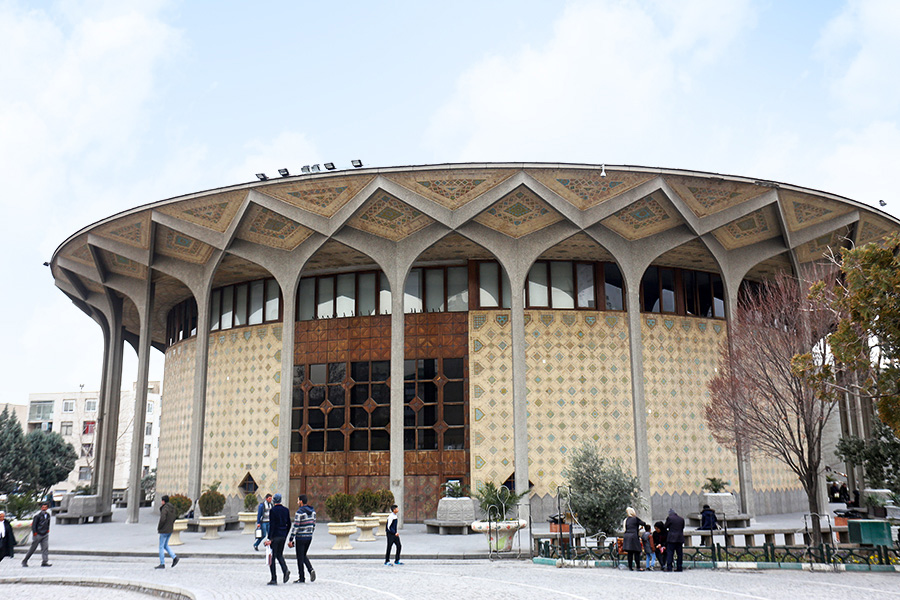
City Theater of Tehran by Ali Sardar Afkhami, Designed in 1967, completed in 1972. Image courtesy of Visit to Iran
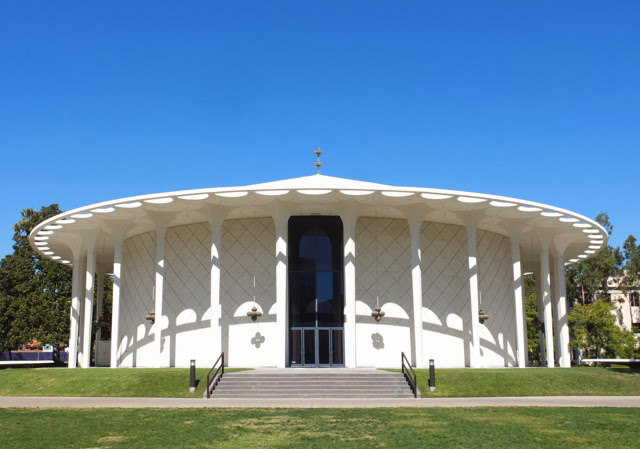
Beckman Auditorium by Edward Durrel Stone, Completed in 1963. Image courtesy of Esoteric Survey
The interview was not publicized until November, 2016. Short after, a quick interview was arranged with Kamran Diba to ask his opinion about Shirdel’s statement. Diba stated that he could call the building absurd but the word, “lie”, does not evoke any meaning. Diba believes that Shirdel demonstrated superiority complex and more of an insult, rather than a logical critique.
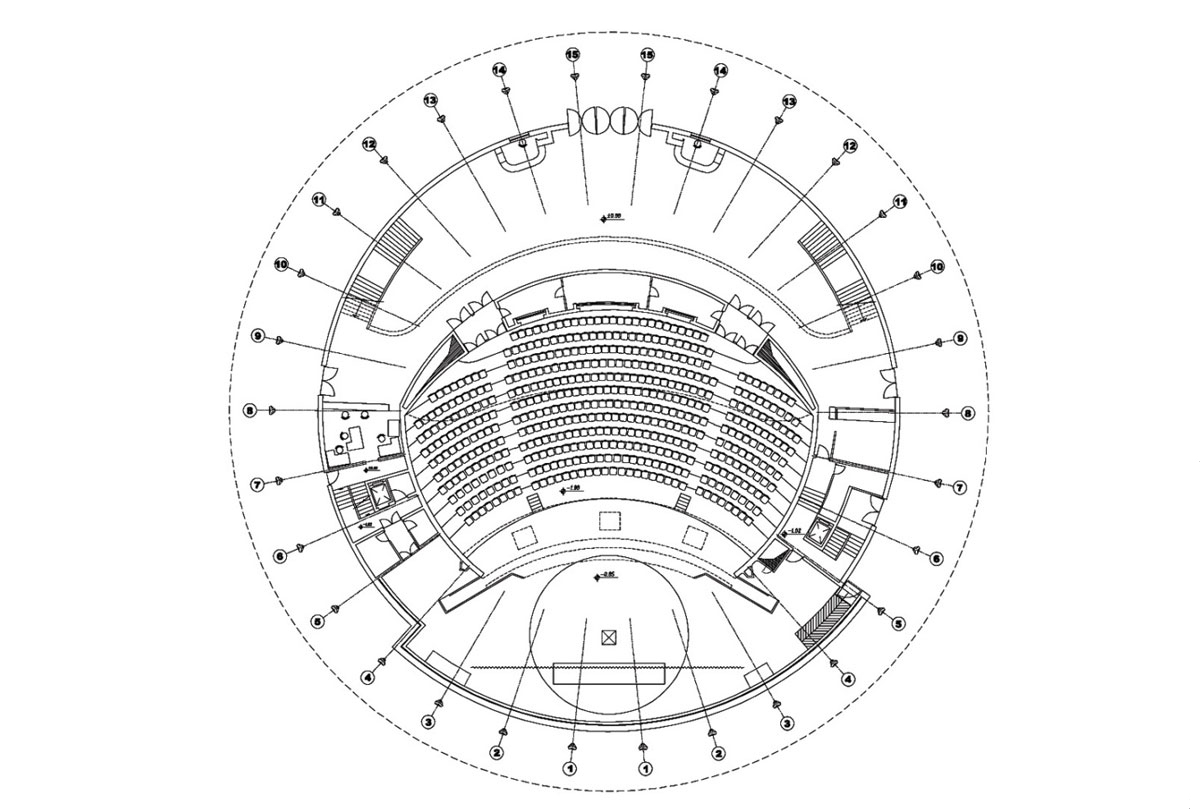
Plan of City Theater of Tehran. Image courtesy of Art Hut
Shirdel tried to brag about himself in the published interview by using sentences such as “being able to design architecture is a hard work that there are only few who can design, but I design and create numerous projects before I serve my breakfast.” Diba’s response to this, was wishing good luck for him to at least design buildings in the future.
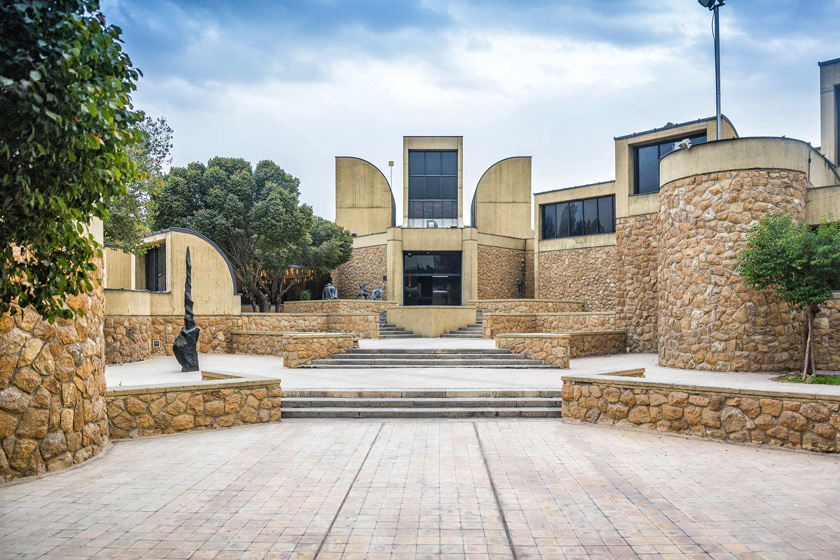
Tehran Museum of Contemporary Art by Kamran Diba, completed in 1977. Image © Alireza Keikha
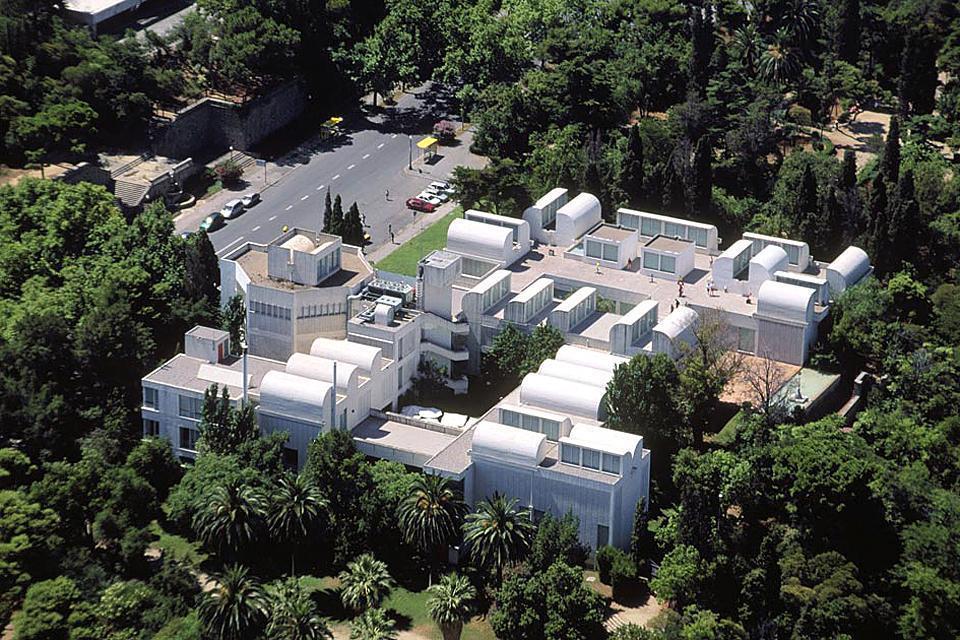
The Joan Miró Foundation, Center of Studies of Contemporary Art by Josep Lluís Sert, completed in 1975. Image © Eduard Solé
Diba mentions that he started the design of Tehran Museum of Contemporary Art in 1968, which is same as when Sert began to design the center of Joan Miró Foundation. He continues that arrangement of the elements in his architecture evokes the big picture of an ancient Iranian city, but it is not the same in Stert’s design.
Diba believes that there are fixed elements in architecture such as walls, roofs as well as north light windows, which are precedents in architecture and everybody uses them in field of architecture. He shed light on his words by giving an example, he mentioned that musical notes were invented years before and today, these fixed notes shape the music of the Rolling Stones and Iranian music in different ways. The interviewer asked Diba if he had studied the projects and his response was as bellow:

Section of Tehran Museum of Contemporary Art by Kamran Diba, completed in 1977. Image courtesy of Parsacad
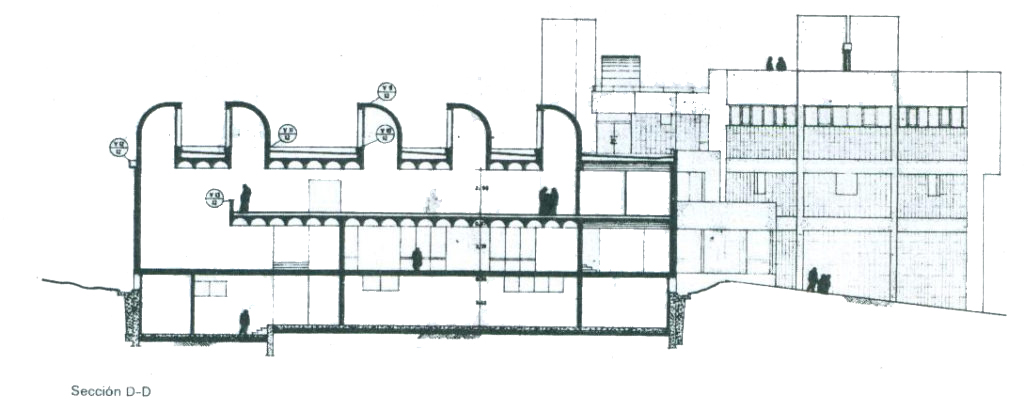
Section of The Joan Miró Foundation, Center of Studies of Contemporary Art by Josep Lluís Sert, completed in 1975. Image courtesy of Wiki Arquitectura
“These architects [Stert, Durrel Stone and etc.] are the fathers of the modern architecture and are my masters. Indeed, I have learned a lot from them and I hope that younger generation of Iranian architecture take the same path and learn from them. Nobody has ever invented something in the modern architecture but rather tried to adjust the fixed elements for their context.”
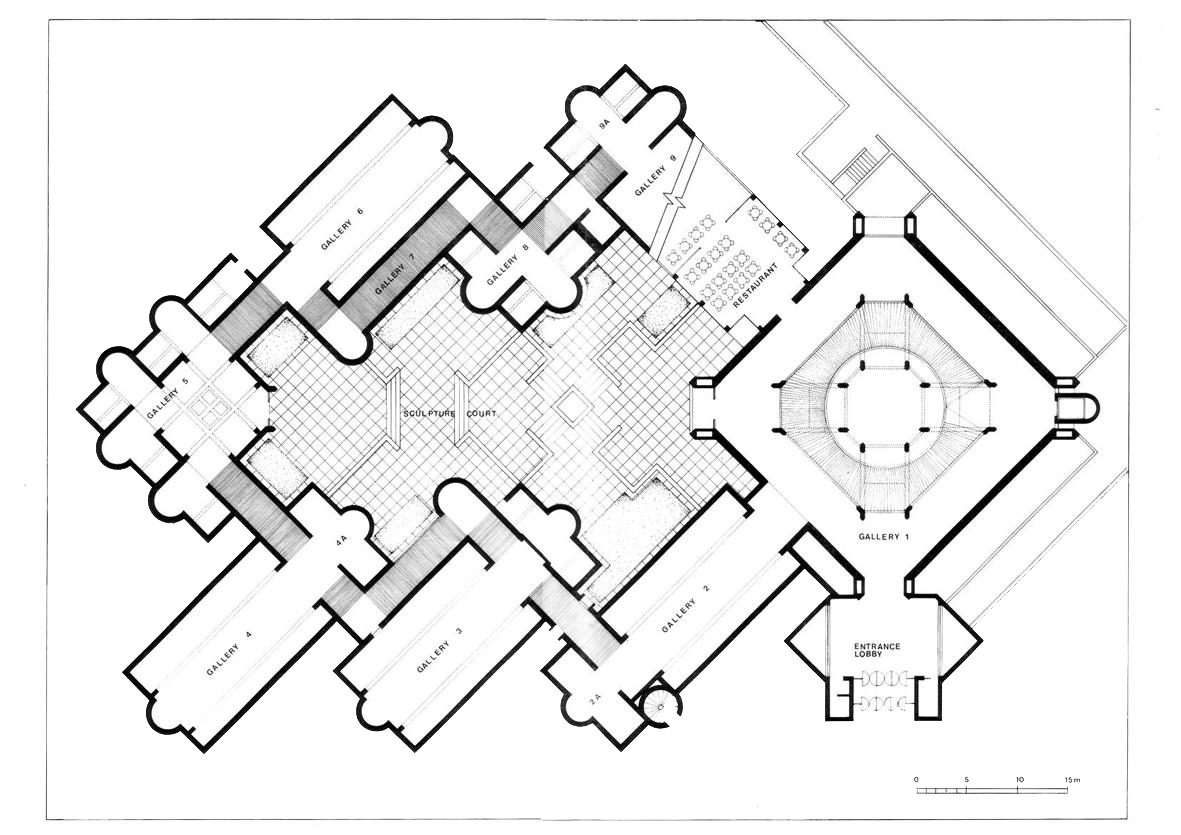
Plan of Tehran Museum of Contemporary Art. Image courtesy of Kamran Diba
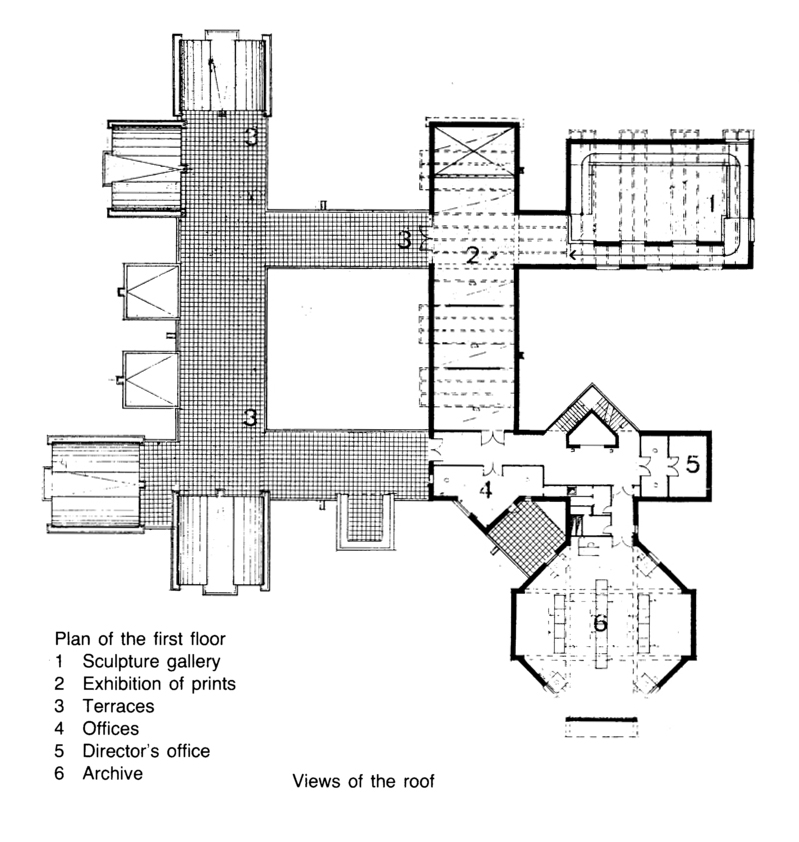
Plan of The Joan Miró Foundation, Center of Studies of Contemporary Art. Image courtesy of ArchDaily
Judgement between the two is hard but it seems Shirdel wanted to state a propaganda rather than a logical critical speech. Bryan Lawson in his book, “How designers think?”, proves that expert architects significantly rely on their pool of precedents. A virtual pool in mind that architects fill it up with images and concepts from others’ projects and even their everyday lives. So, one can sense that Kamran Diba was the winner of the debate. He demonstrated dignity in his every word and openly accepted the use of precedents in his designs. Also, Diba believed that a project can be called a copy if it is exactly as same as its precedents and does not respond to its context.
For instance, the design of Tehran Museum of Contemporary Art reminds people of ancient Iranian cities in Yazd. Shirdel's speech tries to diatribe others based on no logical critical speech. It is obvious that both Diba and Stert used north light windows but the purpose is quiet different. Stert tried to use them for their function and daylighting but Diba tried to use them to represent the ancient Iranian cities. It is much more obvious when you try to analyze the plans and sections. In Diba's project, plan is mostly representing the Iranian courtyard. Same quality exists in Sardar Afkhami's project. City Theater of Tehran used conceptions from Tomb of Toğrül and its brick works whereas Beckman Auditorium represents a pure modern approach. Diba and many of his fellows will remain in memories of thousands for what they have created.
Last but not least, all that glitters is not gold and in architecture, some similarities between two projects do not make them copies of each other.
Top image © Alireza Keikha
> via Shargh Newspaper and Arch808